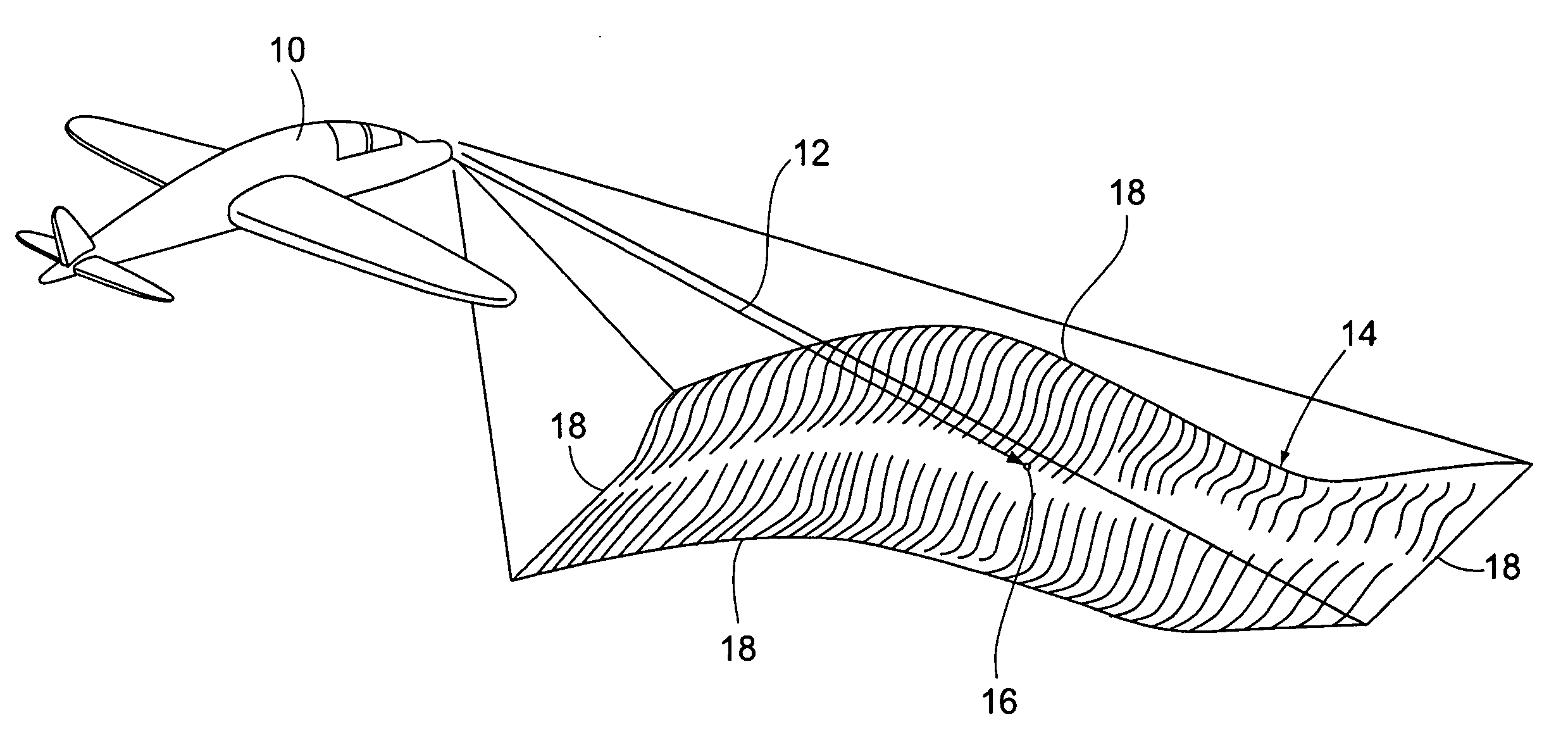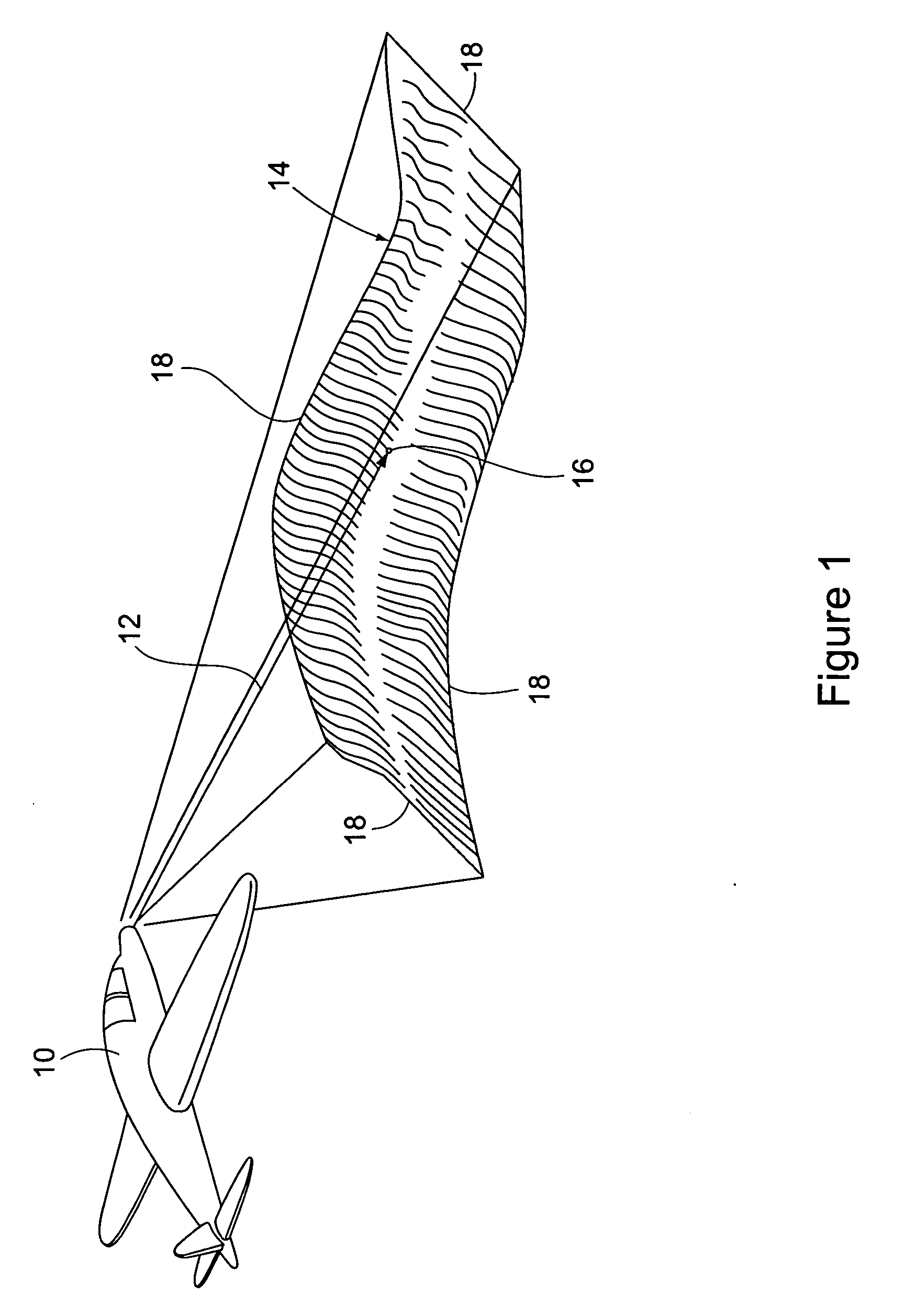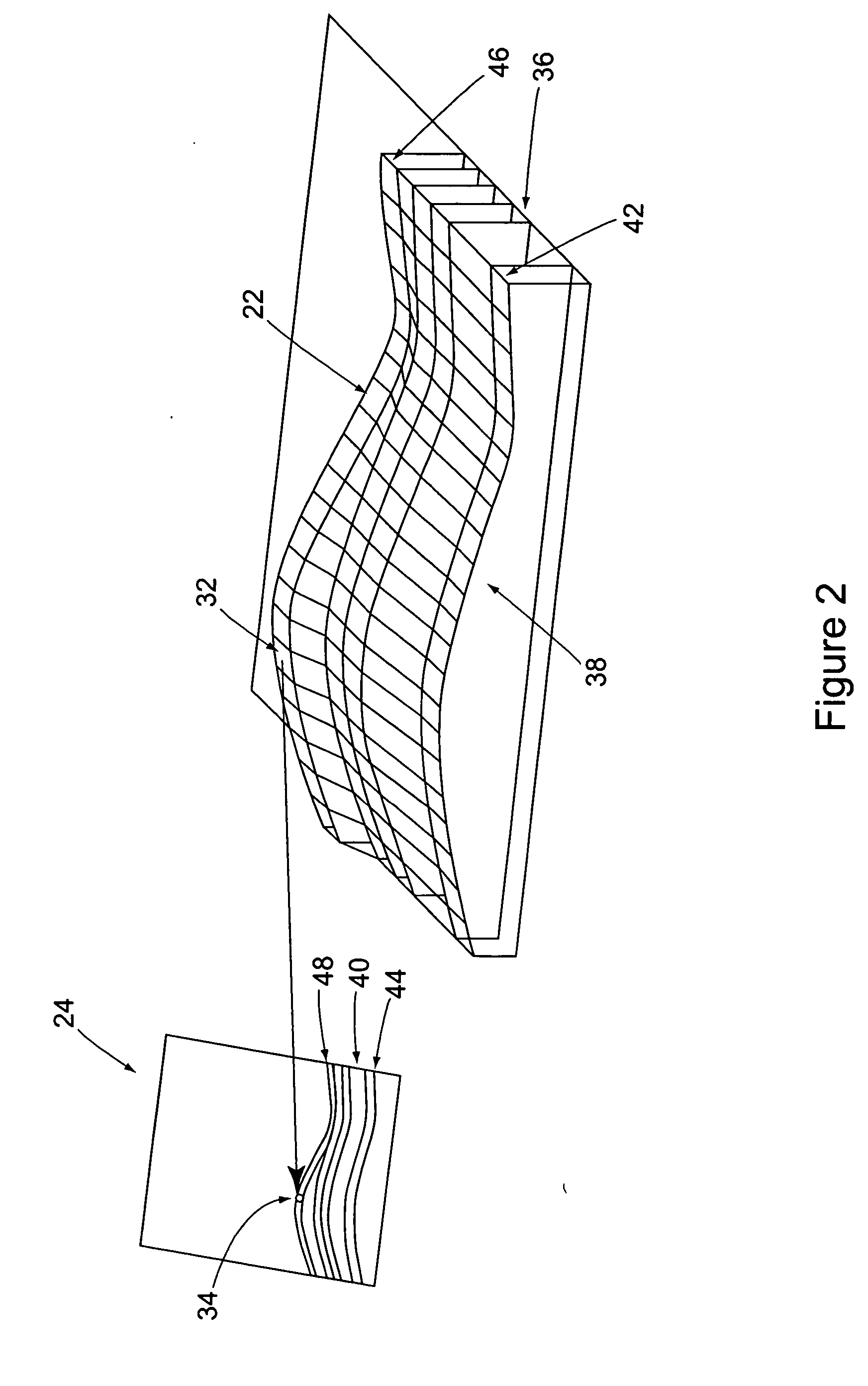Method for generating a synthetic perspective image
a synthetic perspective and image technology, applied in the field of synthetic perspective image generation, can solve the problems of high accuracy of the on-board sensor, difficult and expensive, and difficulty in registering the sensor image with the reference image, etc., to achieve sufficient speed, adequate quality and accuracy, and avoid computational difficulty
- Summary
- Abstract
- Description
- Claims
- Application Information
AI Technical Summary
Benefits of technology
Problems solved by technology
Method used
Image
Examples
Embodiment Construction
[0039] As stated earlier, the present invention provides a method of generating a synthetic perspective image of a location from a reference image of the location, where the generated perspective image is displayed on a typical display screen comprised of rows and columns of pixels, and recorded as a numerical array of electronically stored values for additional processing, or for storage in a computer file for later use. The description of the method to follow is made with reference to its use in a military aircraft, where the method generates and displays a synthetic perspective image of a geographic target area. However, it should be understood that the method of the invention has many different applications, for example, for generating a synthetic perspective image of a location to be used by a robot to enable movement of the robot around obstacles at the given location. In another example, the method of the invention may be employed in generating a synthetic perspective image o...
PUM
 Login to View More
Login to View More Abstract
Description
Claims
Application Information
 Login to View More
Login to View More - R&D
- Intellectual Property
- Life Sciences
- Materials
- Tech Scout
- Unparalleled Data Quality
- Higher Quality Content
- 60% Fewer Hallucinations
Browse by: Latest US Patents, China's latest patents, Technical Efficacy Thesaurus, Application Domain, Technology Topic, Popular Technical Reports.
© 2025 PatSnap. All rights reserved.Legal|Privacy policy|Modern Slavery Act Transparency Statement|Sitemap|About US| Contact US: help@patsnap.com



